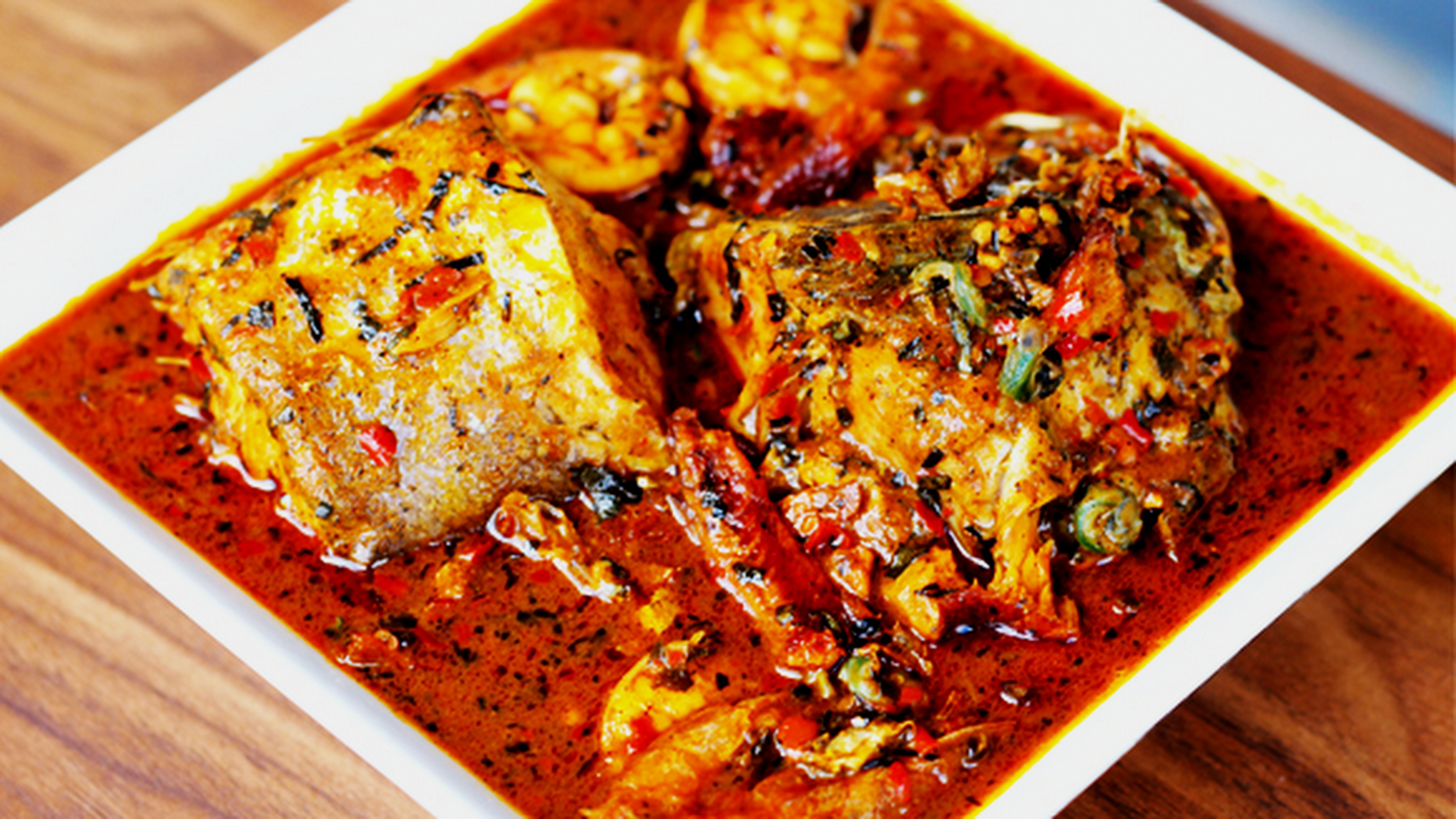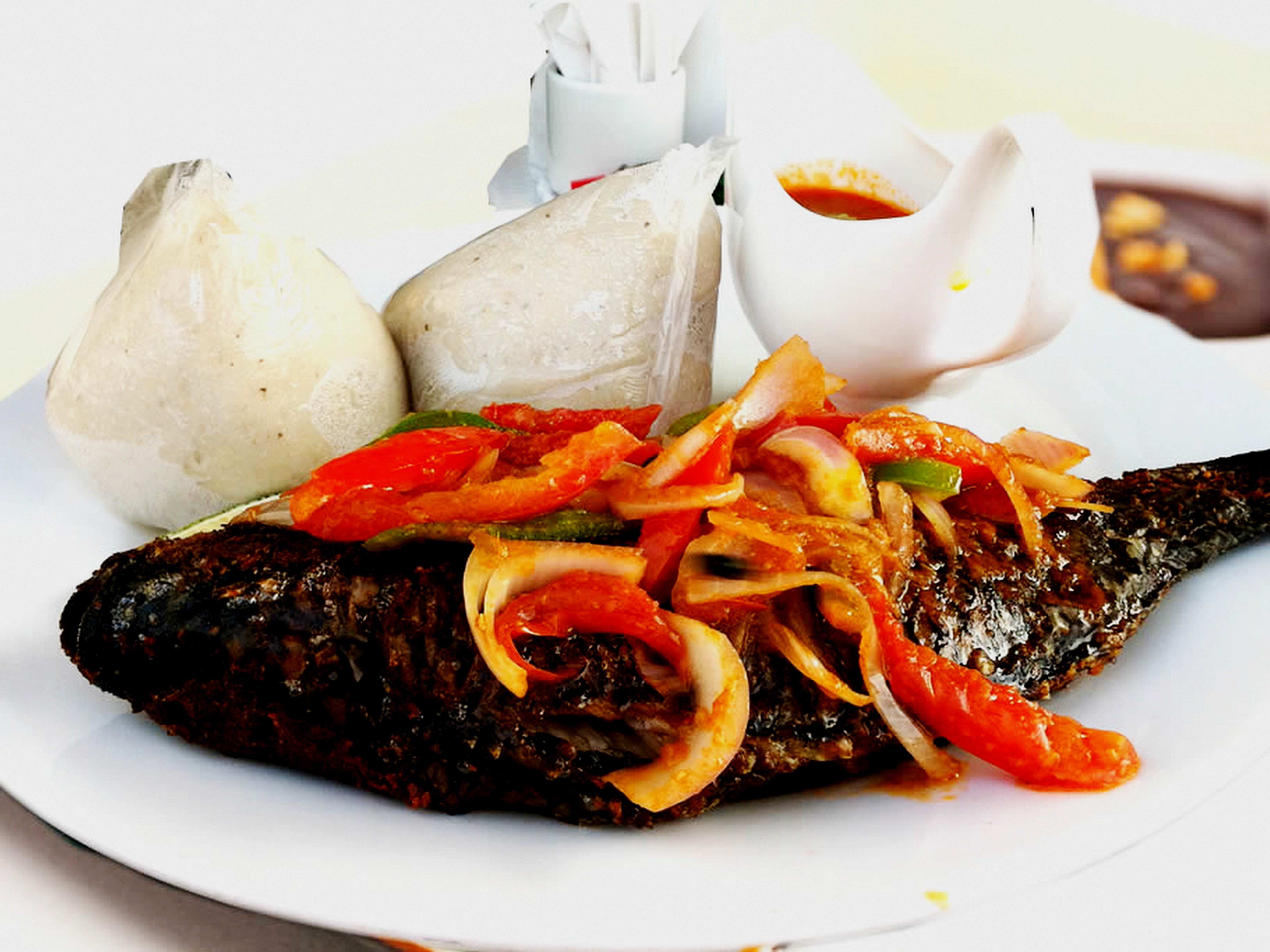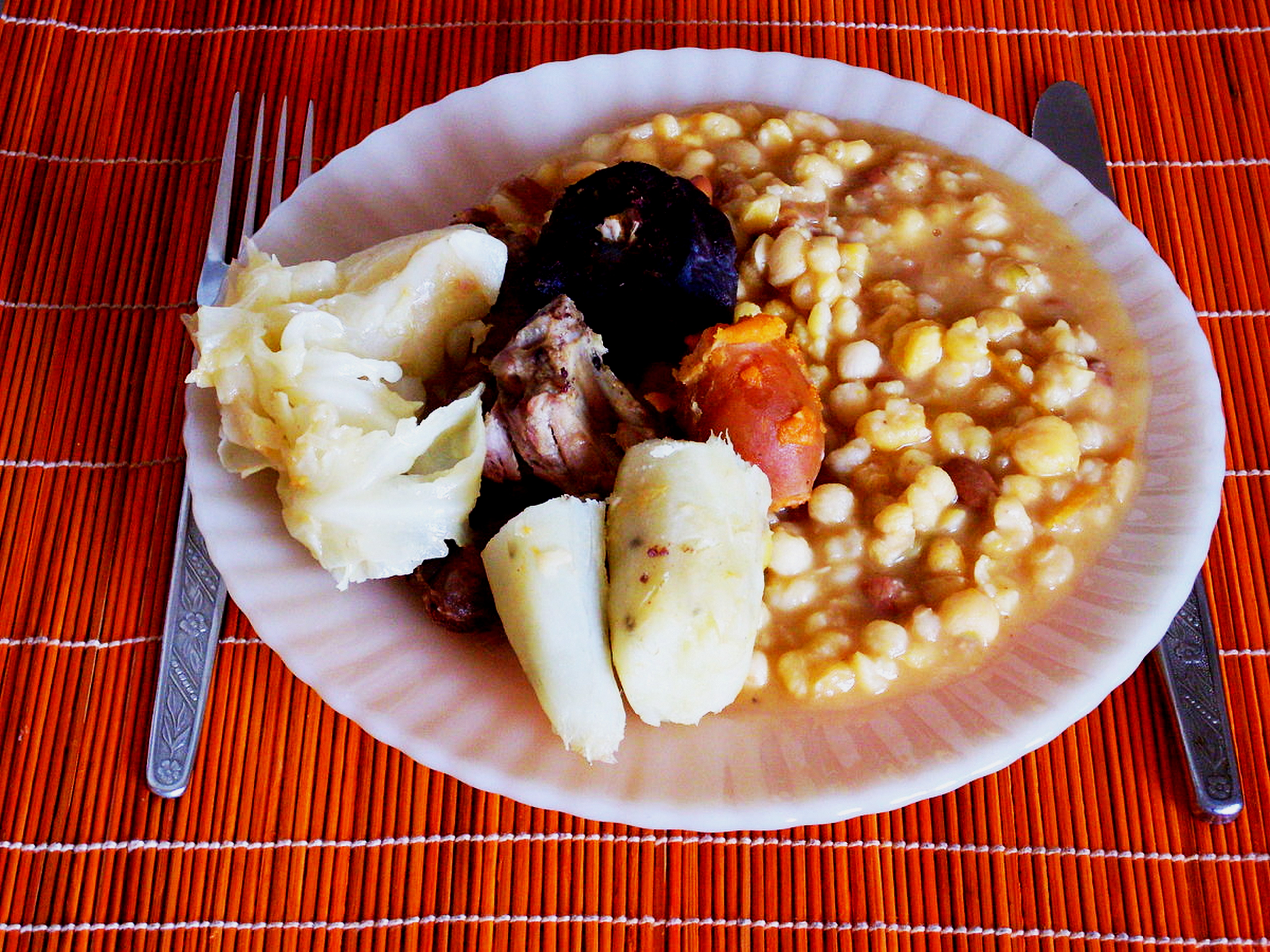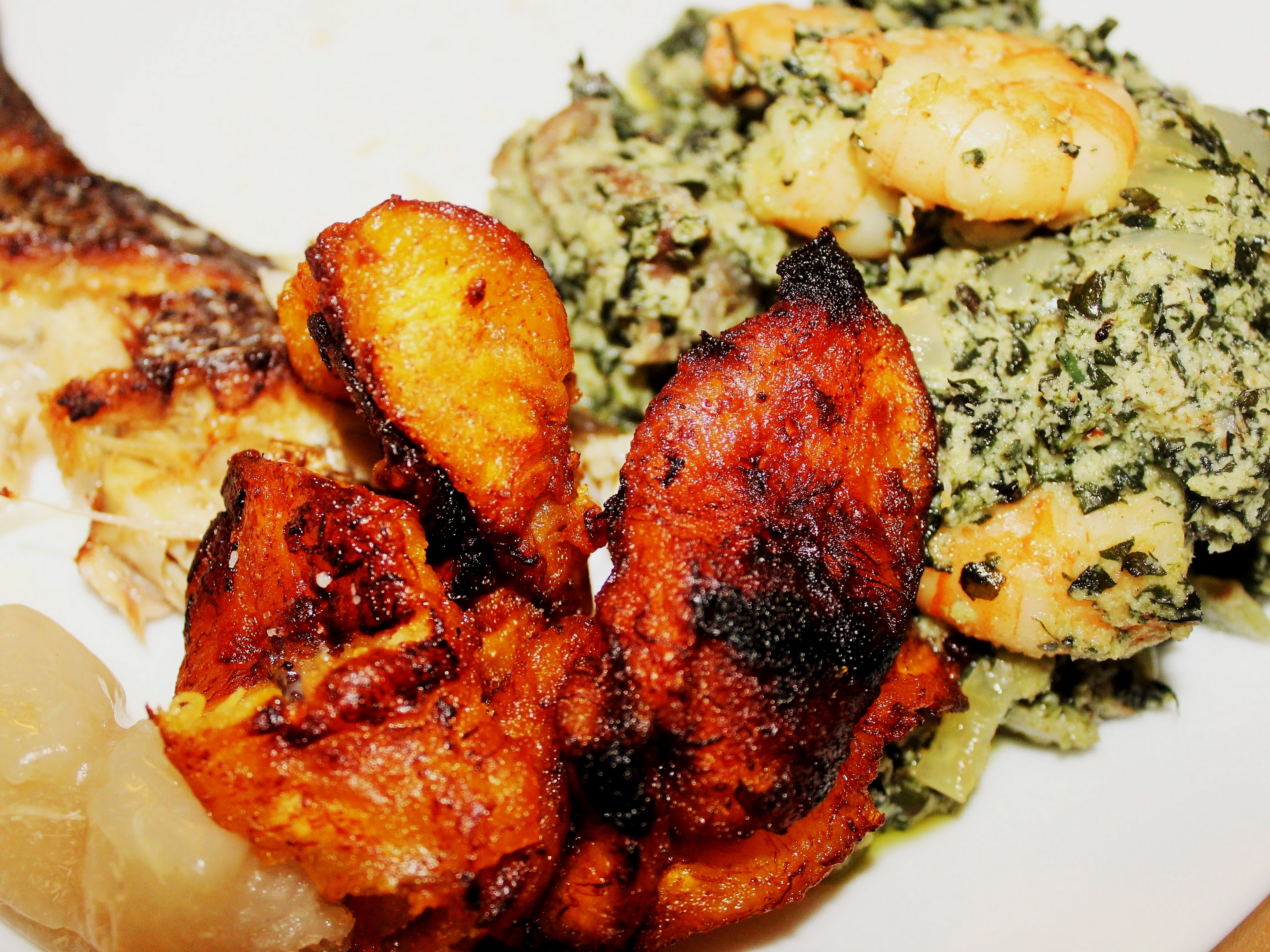As I pointed out back in 2009 (when I wrote part one of this blog), West Africa has a limitless collection of traditional dishes. The tropical rainforested quarter is a cultural hotbed with at least 18 countries. Each one of these countries has at least ten distinct tribes within them. Every tribe has a specific language, religion, culture, music, tradition, dress code, history, and cuisine. West Africa currently suffers from tottering genealogies, systemic corruption, westernization, unwritten history, ancestors who died in exile, taking some basic information of significant tribal procedures, etc.
Much of the younger generation have lost their exact heritage as they develop an intense craving for alien artifacts. Still, there is a considerable deposit of culture which historians have traced through the cuisine.
Banga Soup
One of the several traditional natural fruits that play a significant role in West African cuisine is a fruit from the palm tree. Nigerians, as well as Sierra Leoneans, call it the “Banga” or Palm Nut. You can also get palm oil from this fruit. This palm oil is a crucial ingredient in many West African meals. The palm tree also produces an intoxicating sap that many local West Africans tap and drink, like beer. The sauce from simmered palm nuts thickens into an oil-based soup which some historians believe was introduced in the Delta region by the Urhobo ethnic group of Nigeria.
Since many tribal people populated West Africa by migrating and intermarrying throughout the area, the palm tree and its Banga or Palm Nut Soup is a tasty treat in various countries. It is similar to the Peanut Stew I recommended in part one of this blog. Here the cook boils the palm nut until it softens. The cook strips the softened kernel from its shell, grinds, and strains it with water. The chef then brings the creamy residue to a boil with pepper, onions, vegetable, plus tribal-specific seasoning. A collection of meats (beef, chicken, or lamb) or fish often graces the dish.
Banku & Tilapia
North Americans consider tilapia unnatural, recognizing that agriculturists have bred the species under humanmade conditions. As a result, only a few people opt for tilapia in North America. Despite that, tilapia seems to surface in every fish pot since moving to Europe. So, I’d propose swapping your tilapia with a salmon for my North American first-timers who would like to venture with this feast. I‘d go with the barracuda. Snapper and Grouper fish are also great substitutes.
Some Ghanaian dishes come with a deliciously peppered fish, chicken, and beef collection in one soup or stew. Many of their locals savor the combined delicacies such as beef tripe, cow foot, and other unusual animal parts which may surface in the soup or stew. Usually, the more treats, the better. Many of my western friends are probably thinking, ew but trust me when I tell you, your expression should be yum! Ghanaians prepare a mouthwatering assortment of dishes in their cuisine. Their dinner plates come with a dynamic variety of textures and flavors.
This celebrated culture has also mastered the art of fermented cassava, potato, yam, and other roots, which they mash. A large piece of fish is bathed in traditional seasonings and grilled. Performing as the carbohydrate source is the Banku, which is supplemented with crispy and juicy grilled tilapia or salmon. Mainly from the south of Ghana, the Banku is mashed corn and fermented cassava. Ghanaians serve this with a sauce made from hot pepper, crushed tomatoes, and sliced onions.
Cachupa
How many of my readers can still recall my earlier blogs, lyrics, and poems about the Islands off the west coast of Africa? Islands like Mao, Brava, Santa Cruise, or Las Palmas are among a cluster of beautiful West African sanctuaries the Portuguese enslaved and colonized. Being closer to mainland Senegal and Morocco, where many tribal people integrated, you will find that the Mende, Mandingo, and Portuguese influence Cape Verdi cuisine considerably. Also, expect some differences between the Island and the Mainland cuisine. The people hone their staple mainly from corn and beans. This means Cape Verdi Islanders go for usual West African assortments like rice, yam, cassava, potato, etc.
Of course, they delve into the same range of meats as other West Africans. Being an Island, you should expect to see some authentic foods made from tuna, lobster, chicken, and beef. When dinner is served, you will savor over a Cape Verdi plate. Never turn down Cape Verdian grilled fish, chicken, or eggs with sliced and roasted tomatoes. I often crave their distinctive flavored and baked shrimp, crab, or oysters. Still, our dish of choice (in this blog) comes with corn, cassava, sweet potato, and beans that are seasoned Portuguese style and slow-cooked with any fish or meat ranging from tuna and barracuda to beef, goat, lamb, or chicken.
Ndole
An efficient advance in the library of any history is to inquire about cuisine. The reason is food plays one of the most critical roles in culture. One can learn much about a society or region by unfolding its cultural dishes. Centuries before Europe commanded the world in mathematics, science, or literature, one had to prattle across the Sahara to gain such wisdom at Timbuktu, Mali’s old institutions and megaversities. If you sketched the migration route of the leading historical societies, you would discern that many started from Sudan.
This evidence also shows that some of them had migrated along the coast of West Africa. Is this why the Cameroonian Ndole’ is similar to the Egusi Soup in Nigeria or the Sakpa in Sierra Leone? If a food historian didn’t go to Mali, he or she visited Egypt or Ethiopia. Grievously, ancient high and wealthy empires of Africa saw a constant orchestration of moral conflicts. Every rising empire from the Middle East to Europe became frantic for knowledge and wealth in Africa. And the diverse regions of Africa, namely the North and the East, held off the invaders for centuries. And in the end, they caved in.
The Food & The Tradition
When Egypt fell, so did the empires south and southwest, eventually leading to vast Islamic empires in North Africa. The invaders stole scientific, mathematical, and literacy archives, as antiquity endured in the traditional cuisine. Ndole’ stands for Cameroon’s classic dish. This meal which other regions called “Bitter Leaf,” comes with stewed ground nuts. You cook it with traditionally seasoned fish or beef. Ghanaian dishes are melting pots of assorted fish, meats, and other seafood or delicacies. You may be delighted to discover the same in Cameroon.
The delicious stew of meats, fish, seafood, and bitter leaves comes with steamed or fried plantain. There is a fermented mash of cassava and manioc called “Bobolo.” This meal has a similar appearance, taste, and texture as the Egusi in Nigeria and the Sakpa in Sierra Leone. Traditional seasoning is crucial to West African cuisine since it is a way to tell the difference between a dish prepared by society in Benin, for example, or a comparable meal developed by the organization in Burkina Faso.*








